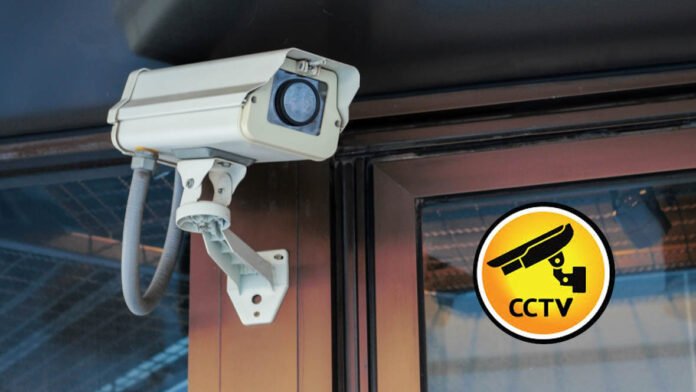CCTV Camera Systems
CCTV camera systems are basically a network of cameras all linked to a single security monitor.
Most businesses and government agencies protect their premises with a CCTV video camera.
Buying Guide
Buying CCTV camera systems is not an easy task. There is hundreds of website ready to sell you anything but not really helping you to select what you really need… This guide will explain to you the technical terms and give you the necessary tools and knowledge to help you select the right CCTV Camera Systems.
Wireless CCTV Camera Systems
Simple wireless cameras will only work on one frequency so you cannot use 2 such products within 100 meters of each other. Cameras and receivers are available with 4 selectable channels making multi-camera systems possible.
CCTV camera systems require power to operate. The voltage is in the range 9-12V DC and this is derived from a small power supply plugged into the mains supply. So wireless doesn’t mean totally “wire-free”.
Wireless CCTV camera systems are great where it would be difficult to run the video cable back to VCR or monitor.
Wired CCTV camera systems
Wired cameras guarantee zero interference and can be positioned hundreds of meters away from the monitoring and/or recording equipment.
Often with wired cameras, you do not have to power the camera locally, instead, one cable will take both power and video signal back to the recording device.
There are a lot of professional CCTV installers who will give you a site survey and recommend appropriate products but, of course, you need to pay for this service.
Modern tech has made CCTV products much more affordable and they can be very easy to fit for the average Do It Yourself person.
Another option is to use a little variety. Consider the code below. One option is to wrap the entire paragraph within a border.
Camera
There are two common types of CCTV cameras, CMOS and CCD which are the image sensor. CMOS based cameras are overall cheaper but don’t produce as clear images as CCD cameras.
Here the main differences between CCD and CMOS technology:
CCD sensors create high quality, low-noise images. CMOS sensors, traditionally are more susceptible to noise.
It consumes little power, CCDs consumes as much as 100 times more power than an equivalent CMOS sensor.
CMOS sensor tends to be extremely inexpensive in comparison to CCD sensors.
The CCD sensor is out there for a longer period of time. They tend to have better quality and much more pixels.
Based on these differences; you can see that the CCD sensor is used in cameras that focus on high-quality images with lots of pixels and excellent light sensitivity.
CCTV camera systems are mainly installed for security reasons. It might be wise to spend the extra money and getting CCD cameras; as they will provide a better picture than CMOS.
Having the extra clarity could be a key factor to facilitate the identification of anyone captured during the recording.
Black and White (B/W) or Color?
If you use the camera in an environment where the light condition is very low; it is recommended that you should buy B/W CCTV security camera systems.
If a color camera is used under low light conditions, the video obtained will be close to B/W.
Color CCTV cameras systems carry an additional premium in price compared with monochrome cameras. They are also less sensitive making the usage at night not a practical option unless good lighting is available.
It all depends on how you want to use your CCTV security cameras. If you intend to use the camera inside, the color might be a good option; if the level of light is sufficient.
Often color cameras have the option of switching to monochrome when need it.
If you are looking for security cameras to mainly monitor an outside area at night; a monochrome camera is probably a better choice.
Day / Night CCTV camera systems
Day-night cameras allow great quality, color recording during daylight hours. When light levels drop below a certain level; the camera’s infrared LED’s allow the camera to continue recording good quality footage even in complete darkness.
The distance the cameras will see at night is dependent on the strength of the LED.
Light Levels
Choosing the correct CCTV security cameras to operate in the ambient light conditions is possibly the most important specification.
Light levels are usually measured in Lux. It is a standardized method by which to measure a camera’s sensitivity to light. The lower the number, the less light will take to replicate a clear image.
Typical light levels are:
Full Summer Sunlight: 50,000 Lux
Dull Daylight: 10,000 Lux
Shop/Office environment: 500 Lux
Dawn/Dusk: 1 – 10 Lux
Main Street Lighting: 30 Lux
Side Street Lighting: 0.5 – 3 Lux
Most CCTV security cameras can cope with excess light. The big problem is when they don’t have enough light to produce a picture. A monochrome security camera rated at 0.05 Lux will produce reasonable results. The color needs a little more.
However, color cameras give good night-time vision by switching to a monochrome mode option.
You won’t get good night-time color pictures without big amounts of additional lighting. So you have to think really carefully about the added cost of color over monochrome cameras.
Monochrome cameras respond well to additional IR (infrared) lighting. With this in mind, real night-vision cameras have a ring of IR LEDs.
Color cameras also have IR illumination; but as we mentioned before, it will switch to monochrome at night even with the IR LEDs turned on. These are true night-vision cameras and are the rate at 0 Lux.
Resolution
Resolution is a measurement of the camera’s clarity. A camera’s resolution is determined by the number of horizontal video lines (like 320 or 600 lines); that the camera needs. In order to reproduce the desired image.
If the resolution is higher, the image will be sharper.
Typical entry-level camera resolution is 330 lines, with high-resolution cameras producing better than 400 lines. As you probably imagine, the higher the resolution, the higher the cost!
Monitors
Selecting a CCTV monitor for your CCTV camera systems is a relatively minor decision, but you should consider the following:
Purchase a monitor especially to handle the type of use it will receive. Televisions are not good monitors. Televisions are built to be on for a few hours per day, not for 8 to 24 hours per day.
Computer monitors will do the job. Flat LCD screens make a great option for CCTV monitors for larger systems. They need little space, have excellent resolution, and generate less heat than regular monitors.
Monitor resolution matches your CCTV camera systems. If you buy a monitor with lower resolution and your camera’s capabilities will not come through.
Same result if you buy a monitor with higher resolution than the resolution of your cameras!
It’s easy to overspend when looking for a monitor. Buy a monitor that will match the resolution of your CCTV camera system.
Remember to buy color monitors if you opt for color cameras.
Size of the monitor
A 9-inch monitor should be enough in most cases. But 15″ is the minimum if you are planning to combine multiple cameras onto one monitor.
CCTV Camera Systems Recorders
The simplest on-budget solution is to use a domestic VCR. These will typically give 8 hours of recording time.
Almost all CCTV camera systems include some sort of recorder to store the images the cameras capture.
The introduction of digital video recorder (DVR). Which record onto hard drives instead of tape, has improved the use of CCTV camera systems.
DVRs have a lot of advantages over VCRs that they’ve rapidly taken over as the CCTV recording solution of choice:
Ease of locating events – If you don’t want to fast-forward through hours of tape; DVRs can instantly retrieve images from any specific day or time… Or automatically skip to the point on a recording when something changed.
Storage quality – It happens to all tapes. Videocassettes start deteriorating once you record on them. And it gets worse every time you reuse them. That doesn’t happen to DVR recordings because they are stored onto a hard drive.
Multitasking – While analog VCRs can either record or play; most DVRs can do both at the same time, letting you review images while still recording.
DVRs are more considerably more expensive than VCRs, which is their only major drawback but prices are going down.
Top Pick – Arlo Pro 2
Pros: Excellent-quality 1080p video. Weatherproof. Rechargeable batteries. Supports IFTTT and Alexa voice commands. Pre-buffered video recording. Continuous recording capabilities. Free and subscription-based cloud storage.
Cons: Expensive. It requires hub (it’s included in the package). Unfortunately, many features are only available when plugged in.
Bottom Line: The Arlo Pro 2 outdoor security camera system is wireless completely, it is working well with other smart devices. It gives a stunning 1080p video with free cloud and local storage options for event-triggered video.





